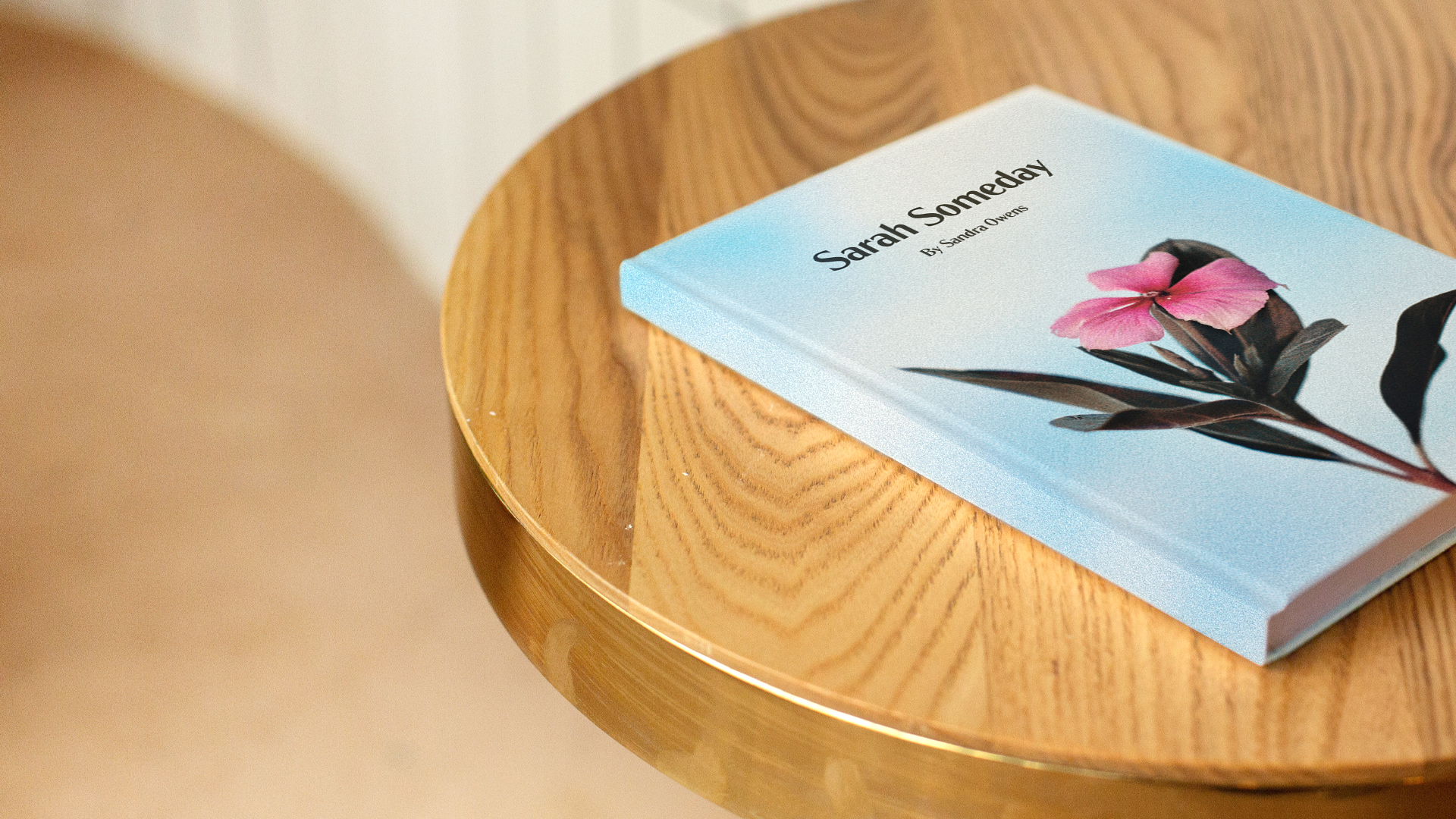How to find and use royalty-free images for book cover design
We all know the saying, “Don’t judge a book by its cover.” But let’s be honest: We all do it anyway. Whether you’re a seasoned self-publisher, a budding book designer, or a gift-giver aiming for an awe-worthy cover, there’s no denying that an awesome book cover image can instantly grab your attention. Consider it your book’s first impression, so you want it to be good.
If you don’t have a photograph or illustration for your cover, finding artwork online is a great option! Here’s the tricky part: Only some images or graphics are up for grabs. Using stock images for book covers is a common route, but it can come with some barriers (like keeping things original and avoiding redundancy). Plus, using copyrighted images without permission is a fast track to legal headaches and a damaged reputation that could hurt your career as an author or creative.
So, where can you find book images that won’t land you in hot water? Enter the world of royalty-free images. Let’s explore the top places to find these creative resources and dive into how to use them to legally find the perfect book cover image.
15 best royalty-free image websites for book creators
There is no shortage of websites where you can find royalty-free images for book covers and other book-related projects. Here are some of our favorites.
1. Best for free hi-res photos: Unsplash
For those seeking a plethora of stunning images from indie photographers, Unsplash is a top choice. Its expansive variety of high-resolution images is a big draw. However, due to its widespread popularity, some images might be overused. But the best part? It’s entirely free, with a paid upgrade available.
2. Best for designers: Canva
A go-to for both skilled designers and beginners alike, Canva boasts over 2 million photos and offers intuitive design tools with book cover templates. Though the platform is brimming with features, its free tier has certain limitations. Canva Pro pricing starts at a flat rate of $29.99 per month.
3. Best for basic needs: StockSnap
When simplicity and quality are paramount, StockSnap comes through by offering a broad assortment of free photos in a user-friendly environment. While it’s known for do-what-you-want permissions, it’s lesser known and somewhat limited in variety. Nevertheless, the platform is entirely free for all users.

4. Best for genre-focused images: Getty Images
A popular choice for editorial photography and media, Getty Images is also highly regarded among creative professionals for stock photos. With a library of over 477 million assets, it’s one of the most diverse sources for genre-focused images. The biggest drawback is cost. Prices range from $125 to $500 for royalty-free photos.
5. Best for extensive collection: 123rf
Offering a massive library of options, 123rf has a whopping 200+ million images, from vector graphics to photos perfect for book covers. The site also has built-in AI tools for generating unique images and written content. Pricing is set on a per-image ($1 per credit) or subscription basis ($39 per month).
6. Best for multimedia assets: AdobeStock
A favorite among creative professionals, AdobeStock is a great option if you’re looking for more than just premium-quality photos. They offer graphics, vectors, video footage, illustrations, templates, and even 3D assets. AdobeStock’s versatility can elevate any book project. There are both credit packs and subscriptions, with individual plans starting at $29.99 per month.
7. Best for quality and variety: Shutterstock
Ideal for creators who want top-notch quality and an endless array of options, Shutterstock is a paid stock photo platform that provides a vast selection of images, including a dedicated section for books. A subscription plan starts at $29 for ten credits or $59 for 25 credits.
8. Best budget option by a premium provider: iStock
Owned by Getty Images, iStock provides an affordable alternative without compromising on quality. With millions of photos, illustrations, videos, and more, they cater to diverse needs. They also offer budget-friendly subscription options for frequent users. Prices can range from $8 to $36 for a standard license.
9. Best for unique collaborative collections: Death to Stock
For an authentic, curated collection of high-quality visuals, Death to Stock has built a grassroots community of artists that supports individual freedom of expression. The platform’s straightforward subscription model of $15 per month makes it a popular choice for designers needing unique and visually appealing content.
10. Best for creative commons images: Flickr
For a blend of free and paid images, Flickr is like a social media network of user-generated content. You can access a wide range of royalty-free imagery by filtering searches to show royalty-free photos under the Creative Commons license. However, always double-check licenses before using images for your book project.
11. Best for authenticity: Photocase
Ditching the conventional, Photocase offers real-life, genuine stock photos. For creators seeking unconventional imagery, this platform delivers the perfect backdrop for one-of-a-kind books. Pricing starts at $15 for five credits, but you may need to upgrade for larger-sized print needs.
12. Best for boutique book marketing: Image Apothecary
The collection of stylized stock photos from The Image Apothecary is curated for bookmakers and creators who need images for book covers, promotional graphics, and social media posts. You can seamlessly edit images to create personalized book marketing materials. Pricing averages about $12 per photo.
13. Best for fantasy and paranormal themes: Bewitching Book Stock
The magical world of Bewitching Book Stock offers royalty-free images centered around witches, magic, and the supernatural, making it a top choice for fantasy and paranormal books. A standard license is a flat fee of $20.
14. Best for thematic book cover collections: Arcangel
A website that focuses on creative stock photography and illustrations for book covers, Arcangel specializes in unique and personalized content that’s relevant to your genre or industry. Most photos are already well-positioned to accommodate standard book dimensions. Purchasing royalty-free photos starts at about $100 and up, depending on the size.
15. Best for historical imagery: Period Images
Period Images is a niche source of book cover photos for a wide range of genres, particularly regency, contemporary, victorian, fantasy, western, and paranormal. The collection of options is truly original. A royalty-free print license costs $19.95 per photo.

What does royalty-free mean?
The term royalty-free is widely used but often misunderstood. So, what exactly does it signify?
At its core, royalty-free describes the licensing agreement associated with an image. When you acquire a royalty-free image, you have the right to use that image without the obligation to pay the owner ongoing royalties for each use. It’s like purchasing a book: Once you own it, you can read it repeatedly without incurring additional charges.
However, a common misconception is that royalty-free means the image is free of cost. While there are stock image websites and companies that offer royalty-free images at no charge, many require an upfront fee. What’s crucial to understand is that after this initial payment (if there is one), there are no recurring fees each time you use the image afterward.
In short, royalty-free means you’re free from continuous financial obligations after obtaining the image, but it doesn’t necessarily mean it’s free. While a zero-cost image might sound enticing, sometimes the best royalty-free images for book covers come with an initial fee.
Who should use royalty-free images?
Pretty much everyone can benefit from royalty-free images—whether you’re a self-publisher looking to sell your book, a book cover designer needing to make magic happen for a client, or a personal bookmaker gifting or keeping your book. If you want an awesome cover and don’t have images or illustrations at the ready, stock photos are for you!
Royalty-free images are an excellent resource for professional creators selling books. An attractive, high-quality cover can significantly boost your visibility and sales. Using royalty-free images lets you have access to a vast pool of versatile and unique visuals that can be tailored to your book’s theme. Avoiding ongoing royalties allows you to manage your budget effectively and focus more on your making and marketing efforts.
Professional book designers, especially those working with self-publishers, can also greatly benefit from royalty-free images. Designing a book cover that aligns with your client’s vision and the book’s content can be challenging, and having an extensive collection of images at your disposal can be a game-changer. This way, you can present multiple options to your clients, iterating until you find that perfect imagery that resonates both with the creator and target audience.
Lastly, personal bookmakers who are creating books as gifts for friends and family can also leverage stock imagery. Crafting a personalized book is a beautiful, thoughtful gesture, and your cover plays a key role in making that first impression. With royalty-free images, you can cater your cover to your loved one’s tastes, hobbies, or interests. Plus, you won’t have to break the bank doing it with plenty of free options.
Pros and cons of using stock photos for book covers
While royalty-free stock photos and images can be a sound resource for all types of book covers, it’s essential to approach them with a discerning eye. And because they’re becoming an increasingly popular option for self-published authors, it’s worth weighing the benefits and drawbacks.
Pros
- Professional look: One of the standout benefits of royalty-free images is their professional quality. Many stock photo platforms vet photographers and curate collections, ensuring you get a polished look perfect for your cover.
- Vast choices: Dive into a stock image platform, and you’ll be met with thousands, if not millions, of options. No matter your book’s genre or theme, there’s likely an image to match.
- Affordability: With varied pricing models, including subscription-based, package deals, or individual purchases, you can often find a quality image within your budget. And remember, royalty-free means no ongoing costs every time you use the picture.
- Reduced legal risks: Sticking to reputable stock image platforms decreases the chances of copyright infringement, saving potential legal troubles and associated costs.
Cons
- Tricky fine print: Not all royalty-free licenses are created equal. Some might restrict how or where you can use the image, especially if it involves commercial purposes, like selling books. Always review license terms closely.
- Shady sites: While there are many reputable platforms, there are also websites that falsely claim images are royalty-free. Ensure you’re sourcing from trusted platforms to avoid unexpected complications.
- Risk of repetition: Here’s the catch—if you can access a beautiful royalty-free image, so can countless others. There’s a chance that another author might select the same image for their cover, which can diminish the unique identity of your book in the marketplace.
- Limited customization: While stock images provide a fantastic foundation, they only sometimes allow deep customization. A royalty-free image might not hit the mark if your vision involves a highly specific scene or nuanced detail.
The creative process of book cover design can be enjoyable, but choosing the right image is crucial. Consider the pros and cons, tailor your choice to your book’s unique needs, and always read up on the licensing details. With the right approach to image curation, you can make your book stand out on any shelf.
Tips for choosing royalty-free book cover images
So, how do you effectively sift through the myriad of images to find the perfect one for your book cover? Let’s just say it takes more than having a creative eye for book cover design.
Follow these tips to ensure you select the right royalty-free image that resonates with your book’s content, appeals to your target audience, and is legally yours to use.
- Mind the sizing. Always consider your book’s final size and orientation when selecting an image. Remember, an image that looks good on a computer screen may not translate well to a printed cover. Look for high-resolution images that you can resize without losing quality.
- Experiment with keywords. Stock image platforms operate on keyword searches. Try multiple variations, synonyms, and related terms to widen your net. For instance, if your book is about resilience, you might also search “perseverance,” “strength,” or “endurance.”
- Steer clear of overused images. Some images are trendy and used extensively across various platforms. When you find an image you like, do a reverse image search to see how commonly it appears elsewhere. Also, consider how often an image has been downloaded, if available. Aim for unique selections that require some digging.
- Consider your book’s theme and audience. Align your image choice with your book’s tone, mood, and subject. A dark, brooding image might not be suitable for a light-hearted romance novel. A cover that is visually coherent with your book’s content is crucial for setting the right reader expectations.
- Edit and customize. Don’t be afraid to get creative with the image when designing your book cover. Crop specific sections, adjust the color balance, add filters, or overlay text. Incorporating your unique touch will help your image match your book’s theme and give it a distinct identity.
- Always double-check licensing. Even on platforms offering royalty-free images, there can be variations in licensing agreements. Some might require attributions, while others limit the number of print copies. Ensure you’ve thoroughly understood and are comfortable with the terms before finalizing your choice.
- Give credit when necessary. While royalty-free images don’t always require attribution, giving credit when it’s due is a good practice, especially if the license mentions it. Besides being legally sound, it’s a nod of appreciation to the creator.
The wide world of royalty-free images can feel overwhelming, but approaching it with a clear strategy can make all the difference.
How Blurb can help
In the pursuit of bookmaking, having the right tools to bring your vision to life is essential. Enter Blurb. With our intuitive design software, BookWright, you can seamlessly integrate your chosen images into a captivating book cover. But beyond cover design, BookWright ensures that every page inside matches the professional quality of the cover.
As you embark on your self-publishing adventure, remember that we are here to simplify the process and elevate your work to new heights. Check out BookWright or sign up with Blurb today and let your story shine inside and out.

